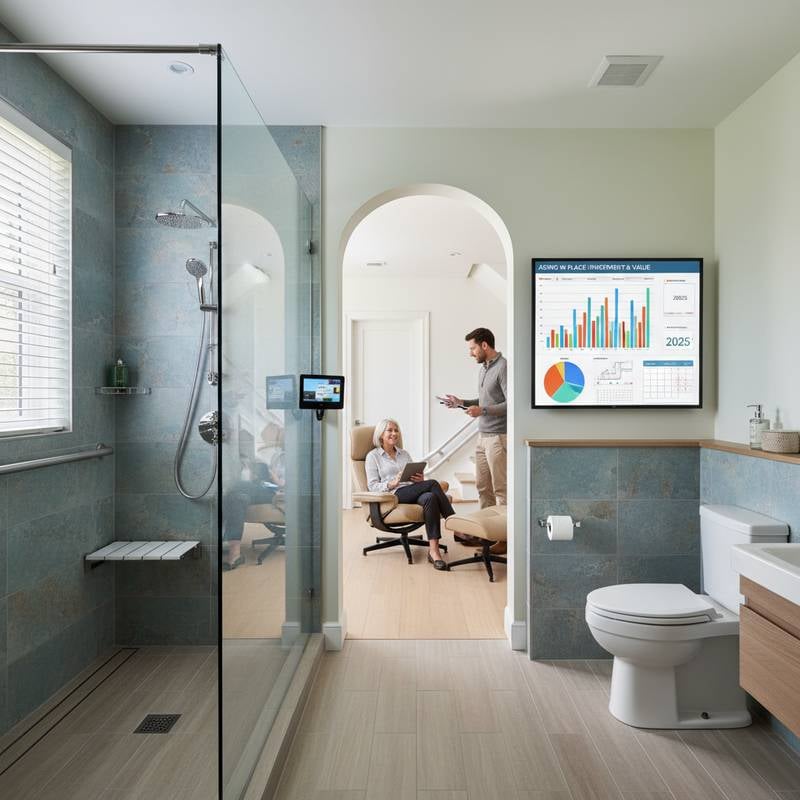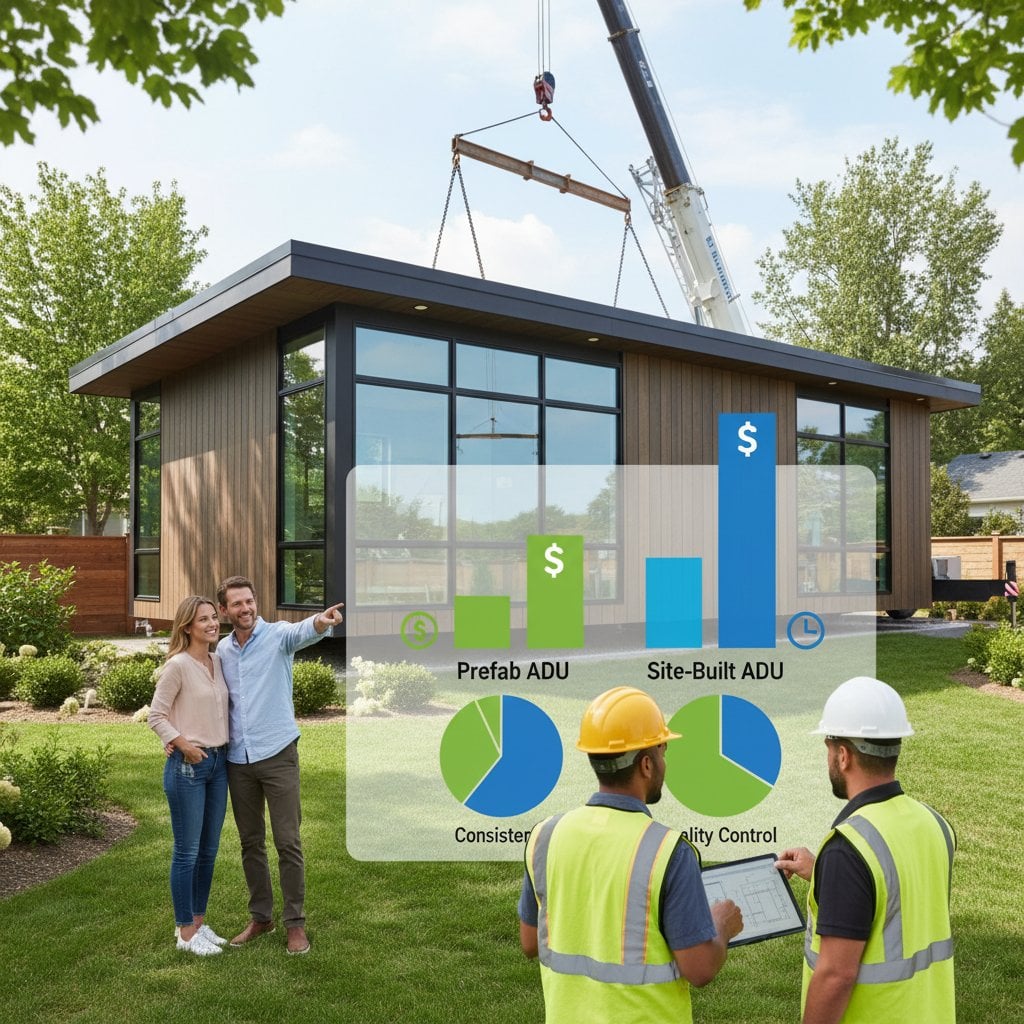Strategies to Age in Place with Universal Design Remodels
Homes serve as sanctuaries that support safety, comfort, and independence across all life stages. Universal design remodeling adapts living spaces to accommodate evolving needs related to mobility, strength, and accessibility. These modifications prove essential for individuals planning to age in place, assist family members with varying abilities, or prepare for future changes, all while preserving aesthetic appeal and practical functionality.
This comprehensive guide defines universal design principles, highlights their advantages for homeowners, details high-impact features, and advises on engaging professionals for enduring outcomes.
Essential Features for Enhanced Accessibility
1. Zero-Threshold Showers
Zero-threshold showers eliminate the traditional raised lip at the entrance, facilitating smooth transitions for wheelchair users, those employing walkers, or individuals with reduced mobility. This design minimizes tripping risks and eases maintenance tasks such as cleaning.
Such showers address a primary concern: falls represent a leading cause of injuries within residences. Beyond safety, these installations impart a sleek, contemporary appearance to bathrooms.
Installation costs typically range from $3,500 to $8,000, influenced by factors like dimensions, tile choices, and drainage systems. Properties featuring accessible bathrooms often experience resale value increases of up to 5 percent.
Homeowners with basic skills might manage minor tasks like tile replacement or fixture installation. However, achieving the correct slope and waterproofing demands expertise; contractors licensed in accessible renovations ensure compliance and durability.
Consider integrating a handheld showerhead and fold-down bench to enhance user comfort and versatility.
2. Wider Doorways and Hallways
Expanding doorways to a minimum width of 32 inches and hallways to 36 inches accommodates wheelchairs, medical equipment, and effortless passage for multiple occupants. Lever-style handles replace traditional knobs to reduce the physical effort required for operation.
These adjustments promote fluid movement throughout the home and prevent bottlenecks during daily routines. They also future-proof spaces against potential mobility challenges.
Budget $1,500 to $4,000 per doorway, depending on framing adjustments and hardware selections. The overall enhancement to home flow can contribute to broader market appeal, potentially raising property values by 3 to 4 percent.
Basic hardware swaps qualify as DIY projects for skilled individuals. Structural modifications, such as wall alterations, necessitate professional assessment to maintain building integrity and meet local codes.
Select durable, low-profile thresholds and automatic door closers to further optimize accessibility without compromising design.
3. Accessible Kitchens
Accessible kitchens incorporate elements like adjustable-height countertops, pull-out cabinet shelves, and front-mounted controls on appliances. These features allow users of varying heights or seated positions to prepare meals independently.
Kitchens represent central hubs for daily activities; modifications here foster safety and efficiency, reducing strain from reaching or bending. Thoughtful layouts also support multigenerational households.
A complete kitchen accessibility overhaul costs between $8,000 and $20,000, varying with cabinetry, appliances, and layout changes. Targeted updates, such as sink adaptations, begin at $2,500 and yield practical returns through extended usability.
Simple installations like drawer organizers or faucet replacements suit DIY efforts. Extensive reconfigurations involving plumbing or electrical work require certified professionals to uphold safety standards.
Incorporate task lighting under cabinets and touchless faucets to streamline operations and accommodate diverse needs.
4. Comprehensive Bathroom Layouts
Bathrooms demand focused renovations to include comfort-height toilets at 17 to 19 inches, strategically placed grab bars, slip-resistant flooring, and at least 60-inch turning radii for maneuverability.
These elements uphold personal independence, ensure secure footing, and preserve user dignity during routine tasks. Integrated changes create cohesive, hazard-free environments.
Full bathroom transformations span $10,000 to $25,000, based on material quality and spatial redesigns. Incremental improvements, such as adding grab bars and upgrading fixtures, start at $2,000.
DIY options encompass mounting grab bars or swapping faucets with basic tools. Relocating plumbing lines or expanding enclosures calls for contractor involvement to guarantee effective drainage and regulatory adherence.
Opt for high-contrast colors among flooring, walls, and fixtures to aid visual navigation, particularly for those with impaired vision.
Strategies for Cost Efficiency and Sustained Value
Advance planning integrates accessibility enhancements with routine renovations, thereby reducing expenses on labor and shared materials. Prioritizing critical zones like bathrooms and entrances establishes a strong foundation before pursuing decorative elements.
Universal materials, including textured slip-resistant surfaces, ergonomic lever handles, and dimmable lighting, adapt seamlessly to various interior styles. Exploration of rebates through local governments or nonprofit organizations can offset costs for qualifying upgrades.
These targeted investments prolong independent living capabilities and broaden the home's attractiveness to diverse prospective buyers, enhancing long-term financial returns.
Frequently Asked Questions on Universal Design Remodels
How does universal design differ from ADA compliance?
ADA guidelines govern public facilities with strict requirements. Universal design extends similar concepts to residential settings, offering adaptable, customized solutions tailored to individual preferences.
Will universal design elements give the home an institutional appearance?
Contemporary finishes and fixtures integrate accessibility seamlessly into any aesthetic, from modern minimalism to traditional elegance.
Is installation of grab bars necessary in all bathrooms?
While not mandatory, positioning grab bars adjacent to showers and toilets provides straightforward safety enhancements with minimal disruption.
What is the expected lifespan of a zero-threshold shower?
Properly sealed and maintained installations endure as long as conventional showers, often exceeding 20 years with routine care.
Can universal design accommodate multigenerational living?
Yes, features like adjustable counters and wide pathways benefit users of all ages and abilities, promoting inclusive home environments.
Preserving the Benefits of Your Accessibility Upgrades
Regular inspections identify wear on critical components, such as seals in showers or hardware in doorways, ensuring ongoing performance. Schedule annual professional evaluations to address potential issues proactively.
Adopt maintenance routines like gentle cleaning of non-slip surfaces and lubrication of levers to extend feature longevity. These practices safeguard investments and sustain the home's role as a supportive living space for years to come.











